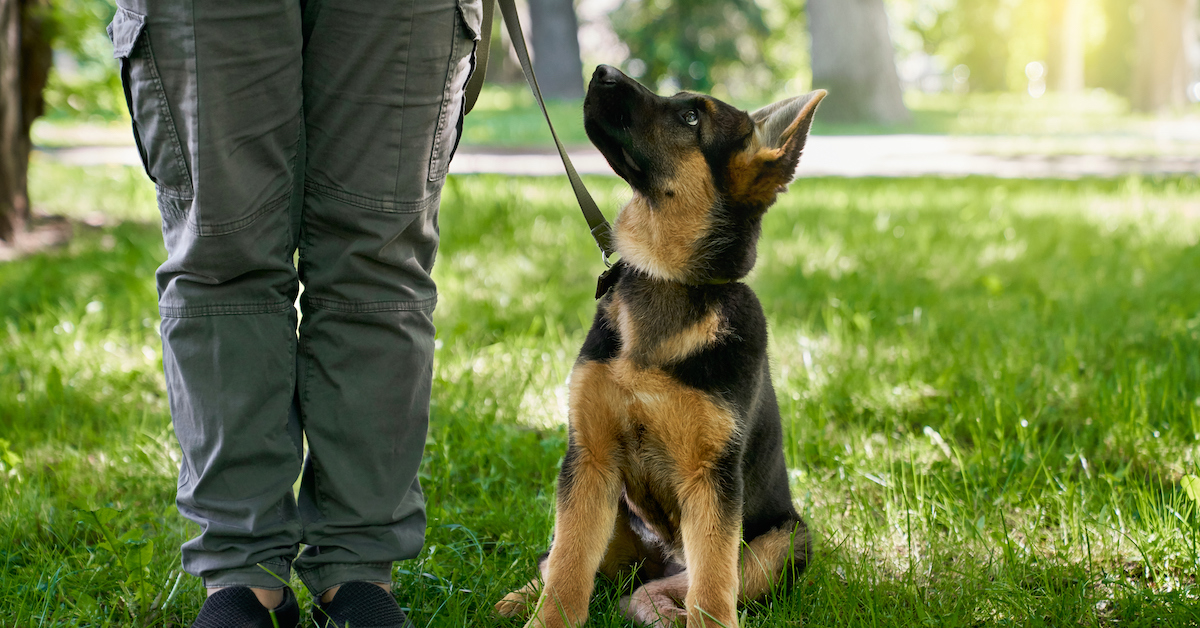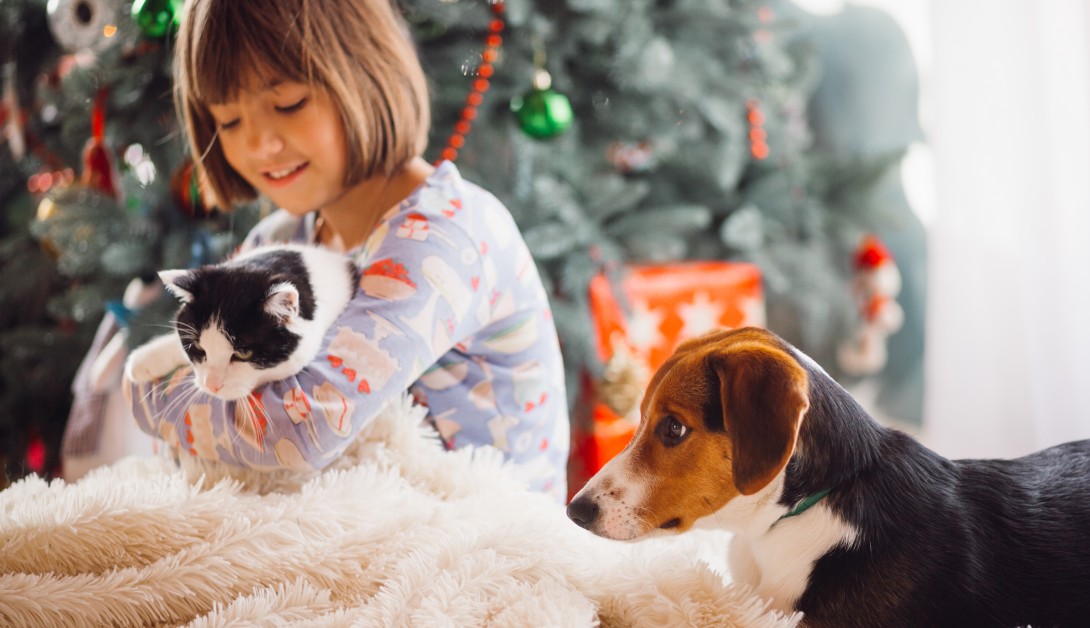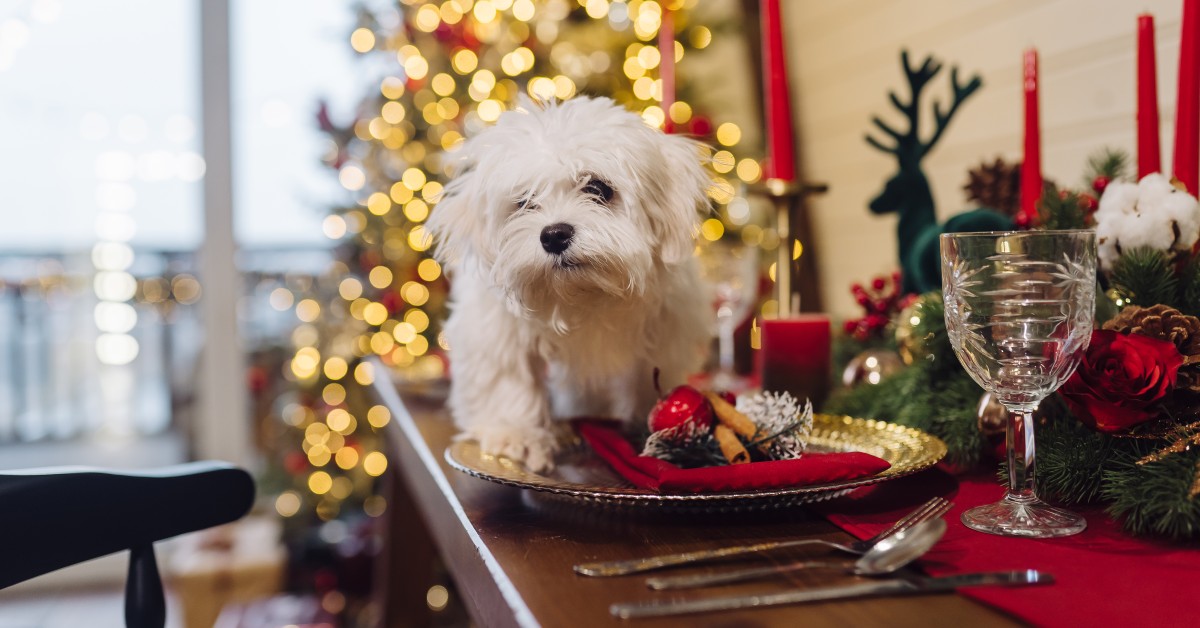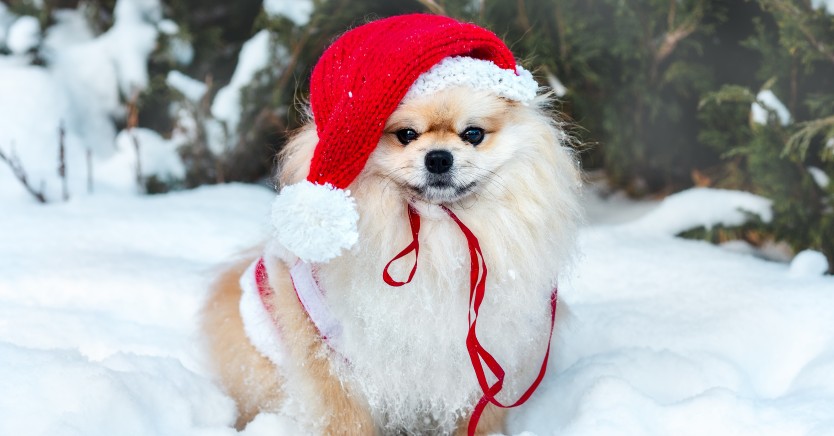Basics of Leash Training a New Puppy
Leash training is a necessary skill that allows you and your new puppy to enjoy walks together.

Getting a puppy is an exciting experience. You’ll likely want to teach your puppy how to socialize, follow simple commands, and use the bathroom outside. You may also want to start taking your new puppy on walks. The American Veterinary Society of Animal Behavior (AVSAB) recommends taking puppies on walks and other public outings as early as one week after their first round of vaccinations, or around seven weeks of age.
Supplies Needed for Leash Training
Leash training your puppy should begin during the very first walk. For basic training, you will need:
- Firm-fitting (but not too tight) harness or flat-buckle collar
- Six-foot leash
- Treats to reward your pet and act as a motivator
Harnesses are often preferred for puppies under five months of age as they provide the pet owner with more control over the dog’s movements. Ensure that the harness has a loop on the back to attach the leash and that it does not restrict the puppy’s natural gait.
Older puppies starting “formal” training may do better with a collar or head halter. By this point, the puppy should have learned not to pull the collar and may be working on heeling while walking.
Avoid retractable leashes as these can cause rope burns when your puppy pulls. They can also be dangerous for untrained puppies who may run into the street or up to another animal or passersby.
Steps for Teaching a Puppy to Walk on a Leash
It’s important to remember that your puppy won’t instinctively know how to walk on a leash. Instead, pet owners need to dedicate time to teach their pets how to walk properly on a leash. Here are the basic steps to get started:
- Ask your puppy to “sit.” Teaching your dog to sit is the first step in leash training. If your pet walks too fast, gets easily distracted, or is near a threat, you want to ensure that he follows your commands. Start by putting on a harness or collar, connected to a leash. Next, ask your pup to sit by your side, facing forward.
- Put a few treats in the hand nearest the puppy. You want to prevent the puppy from having to move from his seated position to get the treat.
- With your puppy sitting next to you, begin moving forward. Allow the puppy to stand and come to you. If the puppy once again goes to your side, reward him with a treat and offer praise.
- Change pace as you walk, as well as the direction of your walk. This will help your puppy learn how to speed up, slow down, or stop when necessary. Be sure to have plenty of treats on hand to reward your dog. Stick with tiny, low-calorie training treats.
Remember that it takes time for puppies to learn new commands and skills. It takes plenty of practice and pet owners must be patient. As your pup gets more comfortable walking on the leash, you can begin introducing other training cues into your routine to make it more challenging and fun for your dog.
How to Prevent Your Puppy from Pulling on a Leash
One of the most common problems that dog owners experience during walks is pulling. Puppies often pull due to excitement or to get where they are going faster. Distractions around them can also result in pulling, such as if your puppy sees a squirrel. While pulling can be frustrating, there are ways to help diminish your pup’s behavior over time.
- Invest in a chest-led harness – Proper gear can make all the difference when teaching your dog how to walk without pulling. A chest-led harness attaches the leash to a clip on the dog’s chest instead of the collar around the neck. As dogs have a natural tendency to push in the opposite direction of where pressure is being applied, attaching a leash to the chest can prevent your pet from pulling.
- Reward good behavior – Puppies are very motivated by rewards. Whether it’s treats, praise, or a combination of the two, rewarding your puppy’s good behavior when he walks properly can help you reach your goal faster.
- Don’t reinforce bad behavior – It can be tempting to yank the leash or yell at your pup when he continues to pull. You may also feel like giving up and allowing your dog to pull you along. It’s important not to reinforce your puppy’s unwanted behavior and instead, take a moment to gain control of the situation and stop until your dog is ready to follow commands.
- Making walking fun for your pup – Puppies will often get bored when forced to walk in a straight line. Make the process more fun for your pup by constantly changing directions or walking in new places. Bring your dog to places that you think he’d enjoy, such as along tree lines where he can stop and sniff or the water’s edge where he can dip his feet.
There may be times when no matter how many treats or praise you offer your puppy, he will choose to pull or hold his attention elsewhere. If this happens, promptly turn around and start walking in the opposite direction of the distraction. Use a command word like “Let’s go,” and simply walk away while holding the leash. Once your dog begins walking with you, offer a treat and praise. If your puppy gets easily distracted, stick with short walks around the neighborhood before progressing to lengthier walks in new places.
Ready to start saving money on pet wellness care?
Then take a look at Mint Wellness, the pet wellness plan that provides fast reimbursement on routine pet care. Save on vaccinations, wellness exams, preventatives, dental, and more!
Learn More


